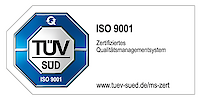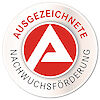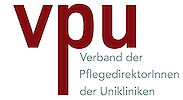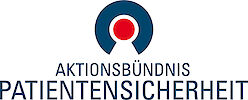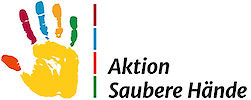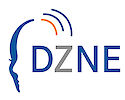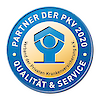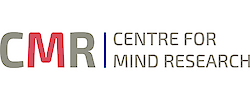Additional Therapies
Creative therapies
Art therapy, along with dance and music therapy, is one of the artistic therapies.
In it, the media of the visual arts are used: these include painting, drawing, sculpture and the new media (photography, etc.) These are used at a receptive and active level of action.
This enables our patients to experience relaxation, to deal with their situation in an individual and resource-oriented way, to develop creative potential and to gain joy of life.
The treatment spectrum covers the entire range of psychiatric and psychosomatic disorders.
Art therapy is offered in the form of group therapy ("open studio"), individual therapy and as project work.
Contact us:
Prof. Dr. Dipl.-Kunsttherapeutin Kathrin Seifert
Tel.: +49 228 287-19823
Music therapy is a form of applied psychotherapy.
The creative medium of music forms the basis on which the cooperation between patients and therapists takes place.
The use of music in the context of the therapeutic relationship can contribute to
- recovery,
- conservation and
- to promote mental, physical and spiritual health.
Specifically, music therapy can be used to:
- enable the conscious experience of one's own situation,
- to uncover connections,
- to experience and try out feelings and new behavioural possibilities,
- to gain a better quality of life
- Regulate activity and tension
- to positively influence the mood.
The condition of the patient determines the individual pace and direction in which the music therapy progresses.
Music therapy is particularly useful if speech is not available or only available to a limited extent for treatment, or if speech is mainly used to ward off feelings. In these cases, access to the patient via a non-verbal medium is often easier.
Activity and emotional involvement are essential in music therapy, not the orientation towards results. Any patient can participate here. No previous musical training such as reading music, playing a musical instrument or musical talent is required.
At the University Hospital Bonn, music therapy currently takes place once a week in two separate groups.
The artistic medium of dance and creative movement are used in conjunction with reflective conversation to support the individual on his or her individual path to mental health.
The central focus of the work is the conscious perception of the body and the expression of movement as well as the expansion of the movement repertoire.
The holistic experience of body, mind and soul makes the connection with sensations and feelings clear.
At the same time, dance therapy offers the opportunity to experience and try out different ways of contact with oneself and with others in movement and dance.
Just as movement reflects our inner attitude, a change on the movement level also leads beyond destructive behaviour patterns and to new solutions.
Elements of bodywork such as Qigong, Yoga or body-related meditation can be used as support.
Dance therapy is offered in individual and group form.
Body-Oriented Therapies
We are a team of three registered masseurs and medical lifeguards and supervise the clinics for neurology, neurosurgery and epileptology in addition to the department of psychiatry and psychotherapy.
For our patients in psychiatry, a thorough medical history is crucial, i.e. the therapies have to be individually adapted to the patient's state of health.
The psyche has a decisive influence on whether pain (e.g. back pain) dissolves or becomes chronic (chronification). In fact, it can be shown that especially people suffering from depression are at an increased risk for back pain.
Mental burdens such as stress, unloved work, problems in the social environment, etc. can be the cause of pain.
Service catalog
- classic medical massage
- Dorn-Breuss massage
- Underwater jet massage
- manual lymphatic drainage / edema therapy , compression wrap
- Reiki
- acupressure
- Heat treatment; e.g. Fango , red light, hot roll
- medical baths / arm baths
- Cryotherapy
- electrotherapy; ultrasound, Stangerbad
- Kneipp therapy; water treading, Kneipp casts
- Water gymnastics
The physiotherapy treatment concepts and techniques that are used in individual and group treatments in psychiatry help to reduce the accompanying symptoms of psychiatric disorders. This includes restlessness, reduced/increased drive, reduced concentration ability, decreased performance and pain.
The treatment is about improving body perception, reducing internal and muscular tension, improving respiration, but also general mobilization and Activation. similarly, complaints from other medical fields such as orthopedics, surgery, gynecology, Neurology and internal medicine can be treated accordingly and individually.
Range:
In the Group:
- Stool gymnastics especially for elderly patients
- Sports/gymnastics/games
- Concentrated Motion Therapy (KBT)
- Bruges concept
- Functional Movement Theory (fbl)
- Relaxation Therapy According to Jacobsen
- Walking
In the individual treatment:
- General mobilization
- Respiratory therapy
- Concentrated Motion Therapy (KBT)
- Functional Movement Theory (fbl)
- Bruges concept
- Dorn method, Breuss Massage
- Sling Table Therapy
- Relaxation Therapies (e. G. Hnc-human Neuro cybrainetics, acupressure, Cranio-sacral therapy, reiki, Jin Shin Jyutsu)
- Voltage regulation-structure/dismantling
- Dizziness and equilibrium training
- Reflex Zone therapy at the foot
- Ergometer training/Motomed
Range of services in the massage and baths department:
- Classic Medical Massage
- Lymphatic drainage
- Therapies according to kneipp, e.g. water treading, alternating castings
- Medical full and bathing baths
- electrotherapy, e.g. ultrasound, Stangerbad
- Thermal therapy, e.g. fango, red light, hot Roll
- Cryotherapy
These diverse offers of physiotherapy and physical therapy are always individually selected for each patient.
Practicing Procedures
Background
Psychiatric diseases and concomitant physical illnesses are often accompanied by changes in physiological bodily functions, e.g. depressive illnesses with a stress regulation disorder, pain syndromes with muscular tension and migraine with vasodilatation of the meningeal vessels. Biofeedback is a method with which a patient can learn to voluntarily influence a changed body function and initiate relaxation.
Method
With the biofeedback device, physiological parameters are made visible by sensors on the computer screen and coupled with a visual or acoustic feedback signal. Typical parameters represent skin conductivity, respiratory rate, temperature, muscle tension, brain waves, pulse volume curve and heart rate. Typical feedback signals represent animations in the form of a rising sun, an opening rose, a balloon or a blood vessel.
Treatment steps
The treatment steps comprise in detail a diagnostic unit with information about the cause of the disturbed parameter as well as the possibility of intentional influence. In a second observation and experimental unit, the patient learns ways to deliberately change the selected signal and is informed about the need to see the success on the screen. In the subsequent training phase of 8 - 10 exercise units, attainable goals are trained with a gradual increase in self-efficacy expectations in the presence of the therapist. The session sequence of an exercise unit is characterised by the alternation between training and guided relaxation in the ratio 3:1. After the training phase there is a transfer phase to everyday conditions and stress situations
Summary and treatment in our clinic
In summary, biofeedback combines psychophysiological and behavioural basics under learning theory aspects. Biofeedback is an easy-to-learn, side-effect free and effective treatment method by which changes in physiological bodily functions in psychiatrically ill patients can be normalised by the patients themselves.
Use in the Clinic for Psychiatry and Psychotherapy at the University of Bonn: Biofeedback is available as an additional treatment method in special indications. Due to insufficient scientific evaluation, health insurance companies in Germany do not yet cover the costs of biofeedback.a
Mental illnesses are often accompanied by disturbances in mental performance. These can also impair the ability to function in everyday life. Cognitive disorders, e.g. memory disorders, slow reactions, reduced sustained attention can be improved by practising procedures. Training of mental functions on the computer has proved to be very effective. After initial instruction, the training can be carried out at one's own pace and the difficulty of the training can be adapted to the individual's abilities. In addition to objective improvements in performance, the small sensations of success during training are also motivating and help to realistically assess one's own performance.
People with psychiatric illnesses are under great mental stress. In the Clinic for Psychiatry and Psychotherapy at the University of Bonn, stress management through mindfulness is regularly carried out in groups. Here it is taught how to get back in touch with oneself, how to recognise one's needs better and how to perceive physical symptoms as helpful signals in order to deal constructively with difficult feelings such as anger and fear.
It is an easy-to-learn, side-effect free and effective treatment method that helps you to find peace of mind, achieve physical and emotional balance, minimise stress and strain, increase concentration and presence and develop new perspectives and individual solutions.
In summary, intensive mindfulness training stimulates a more positive attitude towards life and the development of new perspectives.
Enjoy with all senses
In a pleasant and trusting atmosphere, the participants are sensitised to enjoy the beautiful moments of everyday life.
The introductory session begins with an explanation of the rules of enjoyment:
- Enjoyment takes time....
- Enjoyment must be allowed....
- Enjoyment does not go by the way....
- Less is more.....
- Choosing enjoyment that does you good....
- No pleasure without experience.....
- Enjoyment is everyday
In each of the following sessions, one of the five sensory perceptions is in the foreground. In practical exercises, which are naturally associated with enjoyment, you will learn step by step to enjoy (again) with all your senses!
Cooking therapy is about the (re)acquisition of everyday skills, activation and joy in cooking together.



